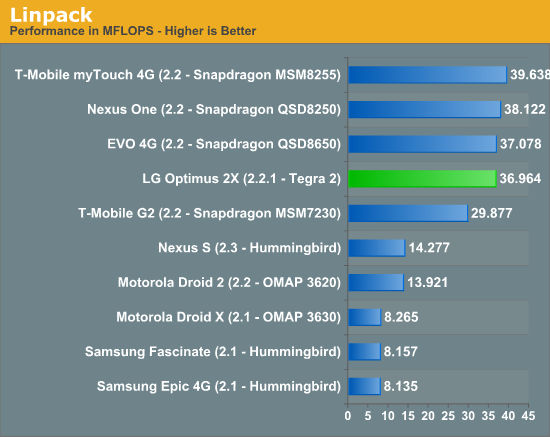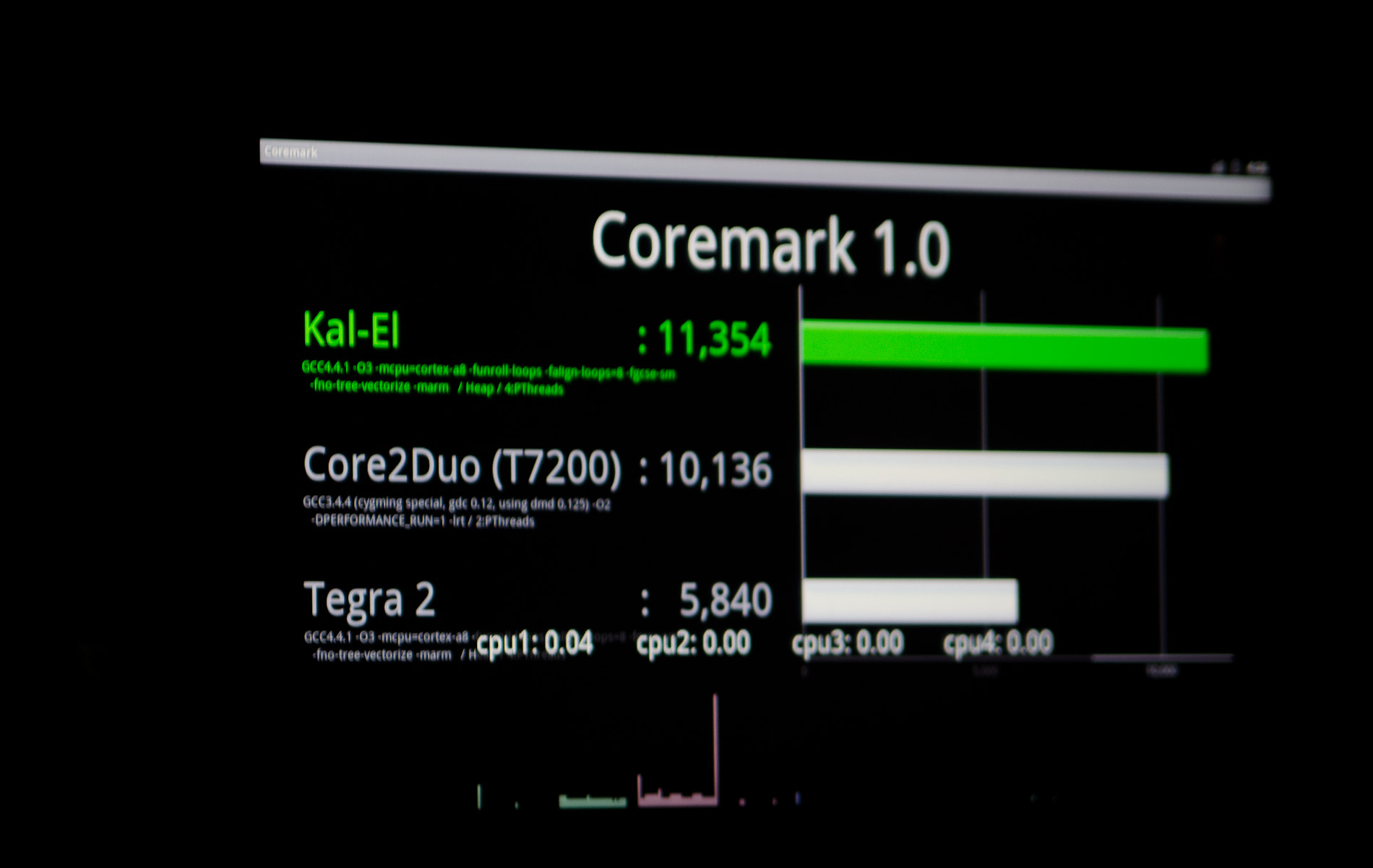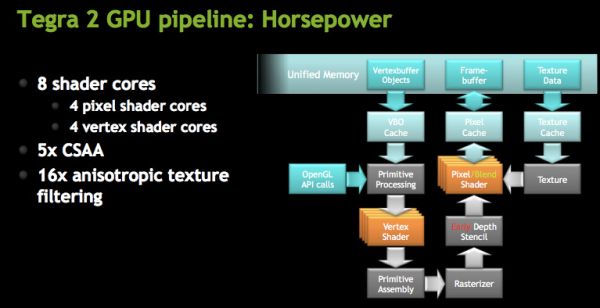It should be obvious that they measured T3 FP performance with 4x NEONs versus T2 without it
So acording to nvidia Core 2 Duo FP performance is something over two times more than Tegra2 ?
Here are some funy results of the soc-s. 37 Mflops

It should be obvious that they measured T3 FP performance with 4x NEONs versus T2 without it

... But I don't really get the appeal of playing videos at that resolution in the first place, and I especially don't agree with the laptopmag writer that 2560x1600 is a resolution you'll want on mobile devices. But I don't consider tablets mobile devices, maybe he does. It's a useful resolution in general, but I find > 1080p to be vastly overkill, and it isn't going to matter in 2012 if no one is releasing movies at that bit-rate. It isn't worth the bandwidth or storage space.

So acording to nvidia Core 2 Duo FP performance is something over two times more than Tegra2 ?
Here are some funy results of the soc-s. 37 Mflops.

~300 DPI tablets, daisy-chained external DisplayPort monitors, and 3D. those are three reasons why pushing what seem today like absurdly high dot clocks out of mobile parts will be an everyday expectation in two, three years.
DisplayPort's throughput is 17.28 GB/s, and most of that is intended for video. someone's gotta feed it.
That coremark is highly suspect:
-> GCC 3.4.4 May 18, 2005
-> GCC 4.4.1 July 22, 2009
C2D was released in 2006
O2 - optimizations that decrease size without affecting speed and increase size without decreasing speed
O3 - O2 optimizations plus (essentially) anything that will increase speed
That coremark is highly suspect:

-> GCC 3.4.4 May 18, 2005
-> GCC 4.4.1 July 22, 2009
C2D was released in 2006
O2 - optimizations that decrease size without affecting speed and increase size without decreasing speed
O3 - O2 optimizations plus (essentially) anything that will increase speed
There are no hot-clocked ALUs in Tegra GPUs (yet) and T3 doesn't sound like it either.
Anand is just using the numbers presented in nVidia's own slides.I myself am confused since I thought T2 has 2 Vec4 PS ALUs but judging from what Anand is repeating over and over again (4 ps + 4 vs and 4 MADDs from each) it's more like 8 FLOPs out of the FP20 PS ALUs * 0.24GHz = 1.92 GFLOPs/s. If those should be 2 Vec4 PS ALUs after all it's 3.84 GFLOPs.
That coremark is highly suspect:

-> GCC 3.4.4 May 18, 2005
-> GCC 4.4.1 July 22, 2009
C2D was released in 2006
O2 - optimizations that decrease size without affecting speed and increase size without decreasing speed
O3 - O2 optimizations plus (essentially) anything that will increase speed
Their engineered win wouldn't look as impressive against a mere Atom, it's more impressive to be 12% faster than a Core2Duo.
As well as the fact that the T7200 doesn't have hyperthreading leaving it with only 2 threads, whereas the dual core atoms do, allowing them to run 4 threads.
Sorry but that one made me spray my coffee all over the desk. Try a fraction of a ION IGP with less capabilities and you'll be there.

Because Atom is really poor at Coremark and that would have looked even more dubiousGiven that the Intel competitor here is Atom you have to wonder why they didn't compare to that...
I don't see what's strange about getting a demo running in 12 days. If a PC chip is good you can boot Windows on day 1 and maybe even run 3d mark or something like that. A lot of bugs are the corner cases found in the days that follow.I don't see how they got anything up and running for demonstration in 12 days. They said that they were sampling in December, wouldn't that mean they've had at least a couple months?
I don't see what's strange about getting a demo running in 12 days. If a PC chip is good you can boot Windows on day 1 and maybe even run 3d mark or something like that. A lot of bugs are the corner cases found in the days that follow.
I'm not disputing that they got first silicon in a demo in 12 days (although it'd be a little surprising), I'm just saying that I don't see why they couldn't have had a lot longer and don't know where this 12 day figure is coming from.
